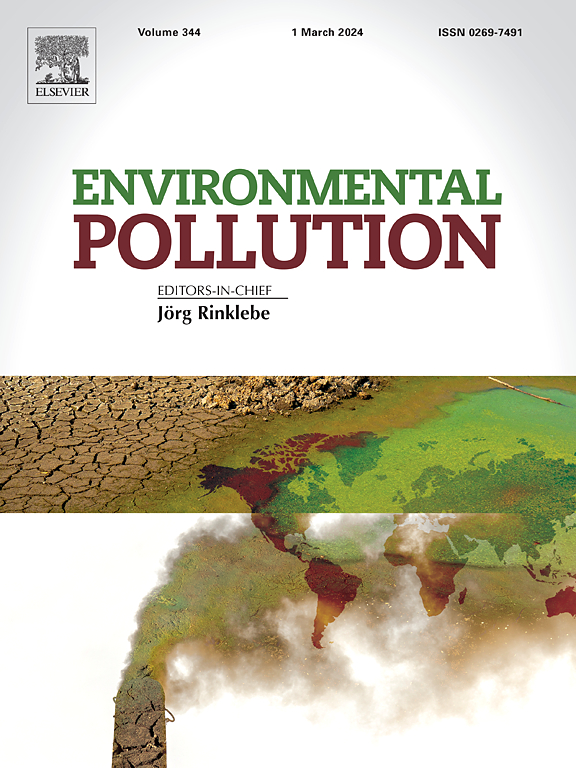Chlorinated paraffins exposure in particulate matter increase the risk of attention-deficit/hyperactivity disorder symptoms in children and adolescents
IF 7.6
2区 环境科学与生态学
Q1 ENVIRONMENTAL SCIENCES
引用次数: 0
Abstract
Chlorinated paraffins (CPs), widely distributed environmental and industrial pollutants, have been linked to impaired neurodevelopment. However, evidence for this potential association between CP exposure and the risk of Attention-Deficit Hyperactivity Disorder (ADHD) and subtypes is lacking. To investigate this possible association between chlorinated paraffins exposure and the risk of ADHD and its subtypes in children and adolescents, a large cross-sectional study was conducted in the Pearl River Delta (PRD) in China involving 122,965 completed questionnaires. Particle matters <2.5 μm (PM2.5) samples and PM2.5-bound short-chain CPs (SCCPs), medium-chain CPs (MCCPs), and long-chain CPs (LCCPs) in the PRD were collected and detected. Generalized linear mixed models (GLMM) and restricted cubic spline (RCS) models were used to estimate the association between CP exposure and ADHD symptoms and subtypes, as well as dose-response relationships. Quantile g-computation models (qgcomp) were performed to explore further the joint effects of a mixture of CPs exposure on ADHD symptoms and subtypes. A total of 7139 participants (5.8 %) were diagnosed with ADHD. GLMM analysis found that an interquartile range (IQR) increase in ∑CP concentrations was associated with the risk of ADHD after adjusting the covariates, and the odds ratio and corresponding 95 % confidence interval was 1.57 (1.54, 1.61). The RCS model showed a monotone-increased dose-response association between CP exposure and ADHD symptoms. Qgcomp model analysis indicated that SCCPs and MCCPs were the major contributors to the risk of ADHD symptoms. Furthermore, girls exhibited a significantly higher risk of developing ADHD and it subtypes compared to boys following exposure to CPs. Above all, our findings suggest that PM2.5-bound CP exposure may increase the risk of ADHD symptoms and subtypes, and provide novel evidence for atmospheric environmental risk factors for ADHD.


求助全文
约1分钟内获得全文
求助全文
来源期刊

Environmental Pollution
环境科学-环境科学
CiteScore
16.00
自引率
6.70%
发文量
2082
审稿时长
2.9 months
期刊介绍:
Environmental Pollution is an international peer-reviewed journal that publishes high-quality research papers and review articles covering all aspects of environmental pollution and its impacts on ecosystems and human health.
Subject areas include, but are not limited to:
• Sources and occurrences of pollutants that are clearly defined and measured in environmental compartments, food and food-related items, and human bodies;
• Interlinks between contaminant exposure and biological, ecological, and human health effects, including those of climate change;
• Contaminants of emerging concerns (including but not limited to antibiotic resistant microorganisms or genes, microplastics/nanoplastics, electronic wastes, light, and noise) and/or their biological, ecological, or human health effects;
• Laboratory and field studies on the remediation/mitigation of environmental pollution via new techniques and with clear links to biological, ecological, or human health effects;
• Modeling of pollution processes, patterns, or trends that is of clear environmental and/or human health interest;
• New techniques that measure and examine environmental occurrences, transport, behavior, and effects of pollutants within the environment or the laboratory, provided that they can be clearly used to address problems within regional or global environmental compartments.
 求助内容:
求助内容: 应助结果提醒方式:
应助结果提醒方式:


